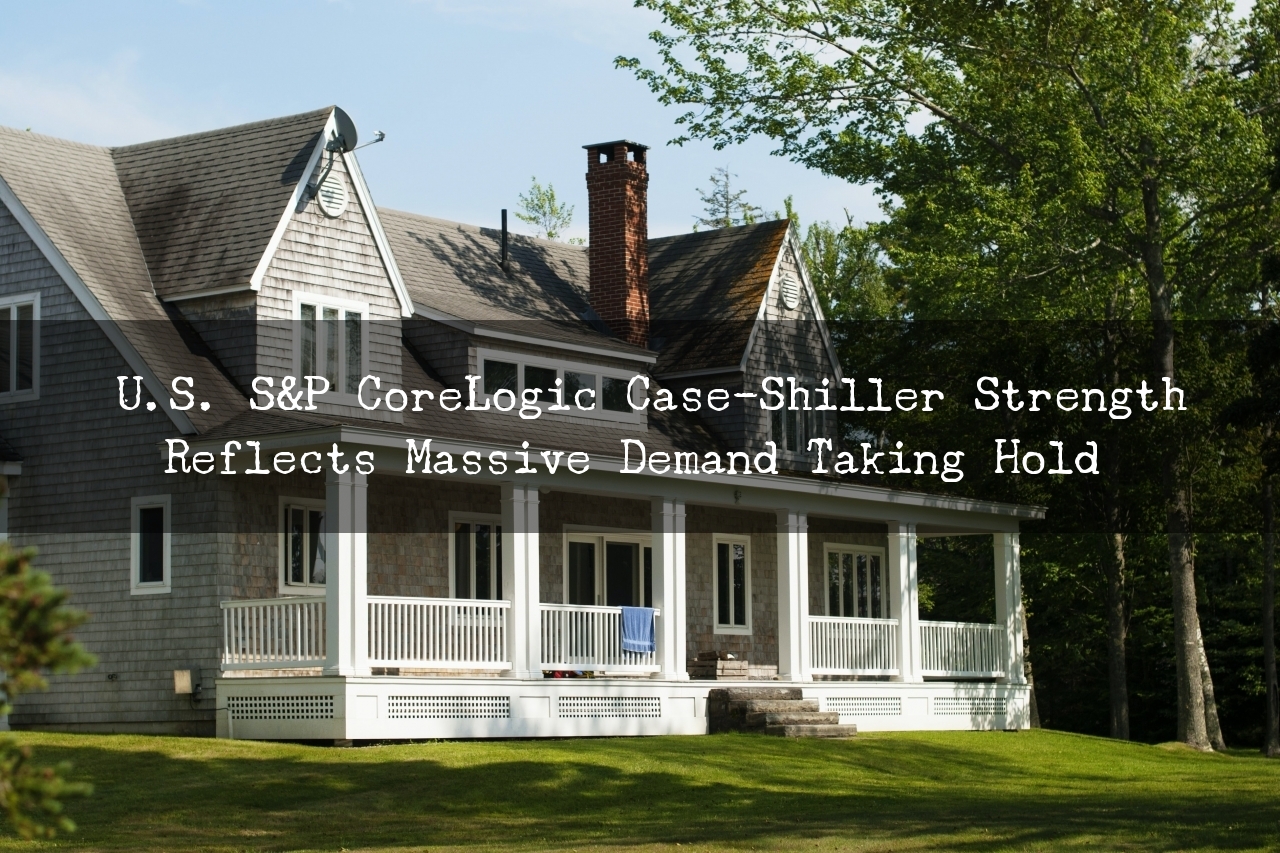U.S. S&P CoreLogic Case-Shiller Strength Reflects Massive Demand Taking Hold
With consumer sentiment on the rise again and economic indicators suggesting accelerated demand ahead, S&P CoreLogic Case-Shiller Index pushed another double-digit increase — up 13.2% year over year in March. The month-to-month index jumped 1.95%, making it the strongest February-to-March increase in the recorded history of data.
While inventory challenges remain the focal point of housing market trends, and have been widely noted as a driver of price growth, it’s important to highlight the massive buildup in demand this year. Home price growth is trending 20% above 2017-to-2019 levels and is contributing to widespread bidding wars among buyers. The heightened demand is partially due to the wave of millennials reaching a critical juncture in their lives when their families are growing and they need more space. However, there is also a sense of rush among non-millennial buyers who may be feeling rapid price growth will put homes out of their reach soon. Some demand this spring might be spillover from last year’s prospective buyers who were left sitting on the sidelines when the pandemic brought the economy to a halt.
Unfortunately, the heightened demand is met by the dwindling availability of for-sale inventories, creating both the unique home buying environment we are facing this year and the continued acceleration in price growth. But, with demand in high gear and no respite in sight, home price growth is likely to remain in double digits over the coming quarter. This is also confirmed by the CME S&P Case Shiller Home Price Index futures, which is marking this month as its 15th anniversary of the first trades.
The 10- and 20-city composite indexes also continued the double-digit increase, up 12.3% and 13.3% year over year, respectively. The last time both indices had similar rates of growth was during the early months of 2014 (Figure 1). Compared to the prior peak, the 10-city composite is now 17% higher, while the 20-city composite is 22% higher than the previous peak both indexes reached in 2006...

